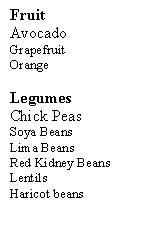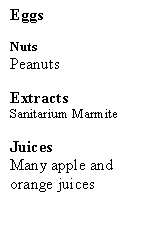GENETICS AND PREVENTION
The chance that a pregnancy will be affected by a neural tube defect is about 1 in 500. However, there are a number of factors that will increase this risk. The main one is a close family history of neural tube defects. Neural tube defects include spina bifida, anencephaly, occult spinal dysraphism and encephalocele. It does not matter whether the close family history is on the mothers or fathers side.
For example, if a family already has a child with spina bifida or anencephaly, or if one of the parents has spina bifida, the risk increases 20 times to about 1 in 25, if preventative measures are not taken. If two children have been affected, then the risk is much higher and if both parents have spina bifida, the risk is greater still about 1 in 4.
Other factors which increase the risk are maternal diabetes (not gestational) and maternal intake of some anti-epileptic medications especially those containing sodium valproate or valproic acid.
FOLIC ACID
Folic acid or folate as it is called in its naturally occurring state, is a member of the B complex group of vitamins. It has been well known for a number of years that sufficient folate in the mothers diet will reduce the chances of her baby having spina bifida by up to 70%.
Adequate folate levels are critical during the early days of the developing embryo, particularly the 3rd and 4th week. It is in this period that neural tube defects occur. Because most women do not realise that they are pregnant this early in the pregnancy and because most pregnancies are unplanned, it is important that all women of childbearing age ensure that they are consuming sufficient folate or folic acid.
For a woman who is not in the high-risk category the recommended amount is 0.5 milligrams (500 micrograms) per day. This amount is not sufficient for women in a high-risk category, and they should seek advice from their family doctor. The recommendation in some countries is 400 micrograms. The reason for the difference is that the strength of folic acid tablets for supplementation varies from country to country.
Three ways of ensuring that you are getting sufficient folate are:
- eating foods naturally rich in folate
- eating foods fortified with folic acid
- taking a daily folic acid supplement.
In the diet
Many foods are naturally rich in folate. But note that folate is water-soluble and is easily destroyed by cooking. Vegetables are best lightly cooked or even eaten raw. Cooking by microwave or steaming is best. The following are good sources of natural folate:



Fortification
Many processed foods, particularly bread and cereal have been fortified with folic acid. Look on the packaging under NUTRITION INFORMATION to see how much folic acid is in the product.
Supplementation
Women planning to become pregnant or who could possibly become pregnant should take a daily folic acid supplement, particularly for a month prior to conception and the first three months afterwards. Supplements of 500 micrograms (0.5 milligrams) are inexpensive and can be bought in pharmacies and health food stores.
It is important that the dose of folic acid is not made up by taking many multivitamin tablets. This can result in an overdose of Vitamin A, which can cause birth defects.
Women in a high-risk category should seek medical advice and take a daily 5 milligram folic acid supplement. A prescription from a doctor is not necessary but it is advisable, because there is a theoretical risk that high doses of folic acid may reduce the effects of some other medications.
In general, there is little danger of taking too much folic acid. Even though folate is regarded as a safe nutrient, which is not toxic to humans, the National Health and Medical Research Council (in Australia) has recommended an upper limit of 10 milligrams per day. Even with a 5-milligram supplement and a diet rich in natural folate and foods fortified with folic acid, this level is unlikely to be reached.
It has been known for a few years that folate is also helpful in preventing cardiovascular disease. However, recent research also shows that folate also reduces the risk of pancreatic and breast cancer.
NOT THE WHOLE PICTURE
While folic acid has been shown to help prevent neural tube defects, it is still not known exactly how it works or what other factors may be involved. Some women will still find that their babies have a neural tube defect even though they have taken the recommended level of folic acid.
For the women for whom folic acid does have a preventative effect, it is thought that the problem is not necessarily a deficiency in dietary folic acid but a difficulty with metabolism at the crucial time for the developing embryo. In these cases the folic acid works by overcoming a partial block in the metabolism of homocysteine, an amino acid. Recent research suggests that a genetic abnormality is at least partly responsible for this failure of proper metabolism.
GENETIC COUNSELLING
Women who think that they may be in a high risk category should have a referral from their family doctor for genetic counselling.
Genetic counselling usually involves the diagnosis of an inherited condition, the provision of information about a particular condition including the chances of having a child with that condition and supportive counselling by a team of health professionals.
In Queensland, this free service is provided by the Queensland Clinical Genetics Service. An outreach service is provided to rural and regional Queensland several times a year. A referral from a General Practitioner is required to access the service.
For more information on genetic counselling please contact the
QUEENSLAND CLINICAL GENETICS SERVICE
Royal Childrens Hospital
Herston 4029
Phone (07) 3253 1686